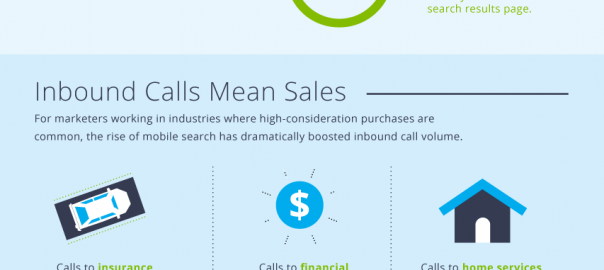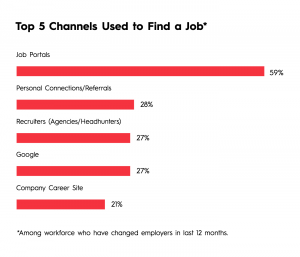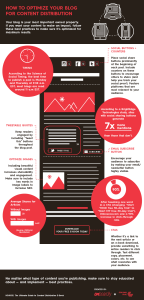At the close of 2014, people spent more time online on mobile devices than they did on desktop or laptops, according to comScore. BIA/Kelsey estimates mobile search will outpace desktop this year. Given these trends, it’s no mystery where the future of advertising lies. Businesses spent 45 percent more on mobile paid search in 2013 than in 2012, Marin Software reports, and they’ll continue investing in mobile to keep up with the growing audience.
Mobile has changed the game by bridging the digital and offline worlds, creating diversity in the way people search and how they convert. Mobile users have complex, multi-channel paths to purchase that might result in a variety of outcomes; according to Google, 73 percent of mobile searches result in an additional action, like a phone call, store visit or purchase. Because of this diversity, 89 percent of local mobilesearch conversions occur offline, according to a study by comScore, Neustar and 15 miles.
These stats point to a big truth for marketers: mobile search tracking matters. Strategizing about how to track the outcomes of mobile searchacross online and offline channels is one of the best things you can do for your business in the coming year.
Local businesses: listen up
Mobile phone calls are the most valuable leads to a local business — they convert at 10 to 15 times the rate of online leads, according to Invoca data. Unfortunately, many marketers don’t have the knowledge or technology to connect mobile paid search and their incoming calls. They continue to invest in PPC marketing tactics to drive online conversions and web form-fills, ignoring the need to drive and track calls coming from mobile search. According to Invoca’s data, just 22 percent of marketers use call extensions in their PPC ads, even though 57 percent say their sales teams prefer receiving inbound calls to web leads.
For marketers working in industries where high-consideration purchases are common, the rise of mobile search has dramatically boosted inbound call volume — Invoca has seen calls to insurance companies increase 111 percent year over year, and calls to home services companies increase 91 percent. Your business doesn’t want to miss out on that action.
Here are five tips for using mobile search to get the phones ringing for your business:
1. Target your audience and improve the customer experience.
Mobile consumers have different needs than those sitting in front of a desktop or using a laptop. They’re more action-oriented and more likely to check store inventories, look for directions, or make a phone call. Treat your mobile campaigns as a separate experience with unique goals and KPIs. Design your links, landing pages and calls to action to give your mobile audience exactly what they want. With short attention spans and small screens, mobile users require highly relevant, streamlined and simple experiences.
2. Integrate call tracking into campaign optimization.
Mobile local searchers, more so than others, tend to be far down the funnel; they’re on the go with a specific need in mind and they’re ready to act. Thirty-eight percent of mobile local searchers report being “in the middle” or “at the end” of the funnel, compared to 14 percent of desktop users, according to the comScore study. Since these searchers are prepared to make a phone call or purchase, local businesses have to be prepared to convert mobile callers into customers.
Once marketers and multi-location advertisers integrate call tracking into campaign optimization, they see an increase in conversions and a decrease in cost per lead. About 75 percent of Kenshoo, a search marketing management solution, local clients use call tracking as part of their marketing campaigns — they understand how valuable mobile leads are to their business.
Use call tracking data to analyze patterns in call times and days to set bid modifiers and take advantage of peak traffic during specific days and hours. Spot trends in geographic locations to target valuable regions and adjust ad targeting. Track the instances of repeat calls versus new ones to ensure that your campaign goals align with your results.
3. Invest in mobile landing page optimization.
Optimizing mobile landing pages can also help increase phone calls and conversions. Performance media company Acquisio suggests testing pages, copy, and click-to-call buttons to determine which ones drive more calls and which ones drive more quality leads. By combining landing page optimization and call tracking, you are empowered to make better decisions, and your business reaps the rewards. Once you find out the most effective landing page iterations, you can also begin to generate more phone calls with a lower cost per call.
4. Make phone numbers more prominent.
Since phone calls are such a critical touch point for local businesses, driving mobile calls is incredibly important to keeping in line with localsearch behavior and expectations. Analyze every touch point in the conversion process – banner ads, search ads, landing pages – to determine which pieces need prominent phone numbers. Each piece of marketing needs to have a prominent phone number to give your customers every opportunity to get in touch with your business.
5. Last but not least, make your ads more prominent.
While this may seem obvious, ad positioning matters. Not only is it important to have a prominent phone number on mobile marketing pieces, it’s important for your mobile ads to occupy prominent positions in search results. Test call conversion rates based on ad position to determine if having ads in the first or second position results in higher call volume and quality calls. While the CPCs may be higher, the increase in call volume and quality may be worth the higher cost.
Consumers are remembering something marketers seem to have forgotten: smartphones also work as phones. It’s time to reimagine best practices and add new data to your analytics. Mobile paid search can increase the volume and quality of inbound phone calls while decreasing costs — it’s a matter of integrating call intelligence into your campaigns to improve your mobile response. Consider the unique needs of your audience, track where their calls come from, optimize mobile landing pages, and make phone numbers prominent across every touchpoint in order to make the most of the mobile opportunity.

Paid search in the mobile era.
Image courtesy of Invoca.
Learn more about getting more calls, conversions and customers in our new eBook: Paid Search for the Mobile Era.
(374)
Report Post







